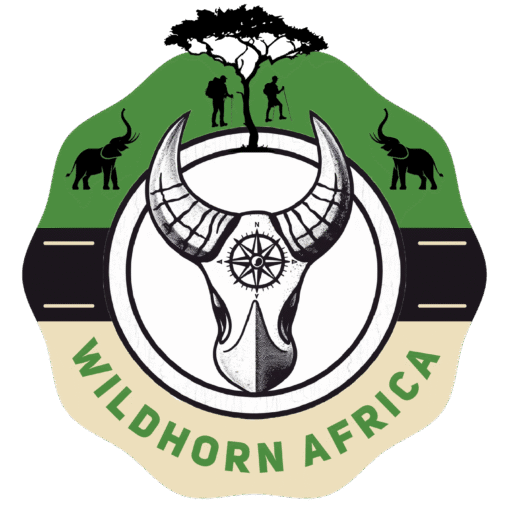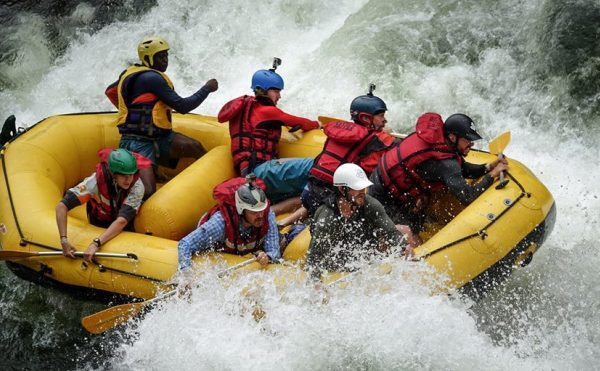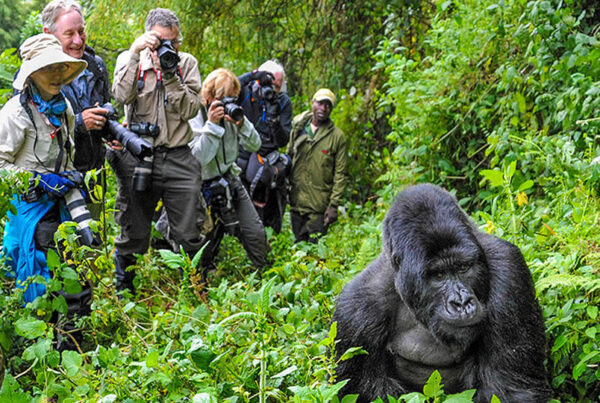Can I Visit Uganda’s National Parks Independently or Do I Need a Guide? | WildHorn Africa Safari Insights
Uganda, the Pearl of Africa, is a land where wild beauty meets raw adventure — a country that humbles and thrills in equal measure. From the mist-shrouded slopes of Bwindi Impenetrable National Park, home of the endangered mountain gorilla, to the open savannas of Queen Elizabeth and Murchison Falls, where lions prowl and hippos grunt beneath fiery African sunsets, Uganda’s wilderness is as varied as it is unforgettable.
It’s natural that many travelers, drawn by this allure, ask one fundamental question: Can I explore Uganda’s national parks independently, or do I need a guide?
The short answer? You can visit some parts independently — but Uganda’s national parks are best experienced, most safely navigated, and most meaningfully understood with a guide. Yet this answer only scratches the surface. To fully understand why, one must look deeper into the nature of Uganda’s wilderness, its infrastructure, its regulations, and the cultural and conservation context that shapes every safari experience.
This comprehensive guide explores all of that and more — providing not only clarity but also practical, experience-based insight to help you make the right decision for your adventure in Uganda.
Understanding Uganda’s National Parks: A Wilderness Beyond the Ordinary
Uganda’s network of ten national parks is unlike those in more commercialized safari destinations. Each park is a world of its own — vast, raw, and often remote. These protected areas are managed by the Uganda Wildlife Authority (UWA), whose mission balances conservation, tourism, and community benefit.
The parks are diverse in landscape and wildlife: from Rwenzori Mountains National Park, where glaciers crown equatorial peaks, to Kidepo Valley, one of Africa’s most isolated yet spectacular wildernesses. Murchison Falls holds the mighty Nile squeezing through a narrow gorge before plunging into thunderous whitewater, while Queen Elizabeth teems with lions, elephants, and hippos basking along the Kazinga Channel.
Yet unlike in smaller or more open destinations, Uganda’s parks are not easily navigated alone. Most of the tracks are unpaved; GPS coverage can be unreliable, and mobile network signals often vanish once you enter the wild heart of the parks. This combination of remoteness and rich biodiversity means that exploring Uganda’s national parks demands not just enthusiasm, but knowledge, preparedness, and situational awareness — things that an experienced guide provides naturally.
The Reality of Independent Travel in Uganda’s National Parks
Traveling independently across Uganda’s national parks might sound adventurous — and indeed, for some seasoned travelers with a 4×4 vehicle, a good map, and a deep love for raw nature, it’s possible. The roads between the parks are navigable, and some parks like Lake Mburo or Queen Elizabeth are accessible to self-drivers.
However, independent travel here is not like self-driving in Kruger National Park in South Africa or Etosha in Namibia. Uganda’s wilderness is wilder, and its infrastructure less structured. Entry gates are not always near towns; fuel stations are sparse; road signs are minimal, and sudden weather changes can turn a dry track into a muddy trap in minutes.
Wildlife can be close — sometimes too close. Elephants block roads, buffalo wander near camps, and even lions may cross your path without warning. Without experience, understanding animal behavior, knowing when to stop or move, or how to interpret warning signs becomes not just a matter of curiosity but of safety.
Moreover, Uganda’s park system emphasizes guided conservation tourism, meaning that even if you drive yourself in, you will often need to hire a ranger or guide at the gate to accompany you. This is particularly true in parks with denser vegetation, such as Kibale National Park (for chimpanzee tracking) or Bwindi Impenetrable National Park (for gorilla trekking), where visitors are strictly required to be accompanied by certified guides.
Why Uganda Encourages Guided Experiences
Uganda’s conservation model recognizes that wildlife tourism must balance protection with participation. Allowing visitors to explore without guidance in delicate ecosystems could risk not only safety but also ecological disturbance.
Guides and rangers in Uganda are not merely escorts; they are the bridge between humans and nature. They interpret animal behavior, track wildlife using decades of field experience, and ensure that visitor activities remain safe and sustainable. Many have grown up near the parks, carrying traditional ecological knowledge and cultural insights that no map or app can replicate.
Moreover, the presence of guides deters poaching and reinforces conservation ethics. Every guided trek or game drive indirectly contributes to the protection of Uganda’s biodiversity, as part of the park fees goes toward ranger patrols, anti-poaching operations, and community development programs.
By choosing to explore with a guide, you are not only enhancing your safety and understanding — you are actively participating in Uganda’s larger conservation success story.
The Safety Factor: Why a Guide Can Be a Lifesaver
Uganda’s national parks, though stunning, are truly wild. The landscape demands respect — not fear, but deep awareness. There are no fences separating human paths from animal territory.
In Murchison Falls, lions, elephants, leopards, and crocodiles move freely across the park. In Kidepo Valley, herds of buffalo numbering in the thousands traverse open plains. In Bwindi, thick forests echo with the calls of chimpanzees and the subtle movements of gorillas.
These are unforgettable sights — but they come with risks that only experience can mitigate. Guides are trained to read signs that an untrained eye would miss: a faint pawprint in the dust, a rustle that signals the presence of a predator, or the direction of wind that determines how close you can safely approach wildlife.
Medical emergencies are also best handled under professional supervision. Guides carry first-aid kits and know the nearest medical evacuation protocols. In remote parks, a delay of even one hour can be critical — and having someone who knows the terrain could mean the difference between safety and danger.
When it comes to safety, Uganda’s park authorities strongly recommend guided travel not as a restriction, but as a form of assurance and protection.
Navigating Permits and Regulations: The Role of Licensed Operators
Uganda’s park entry and activity system is governed by permits. Each park has specific fees, and certain activities — especially gorilla and chimpanzee trekking — require advance booking through UWA or a licensed tour operator.
Independent travelers often underestimate the complexity of obtaining and managing these permits, particularly during peak seasons when gorilla trekking slots sell out months in advance. Guides and tour operators such as WildHorn Africa are licensed to streamline this process, ensuring your itinerary aligns with permit availability and park schedules.
Beyond permits, there are park regulations that must be strictly observed. Speed limits on game tracks, designated viewing distances, and rules on noise, waste disposal, and photography are enforced rigorously. A guide ensures that these are followed seamlessly, not only to avoid penalties but to maintain the dignity of the wild environment.
In many parks, even self-drive visitors are obliged to take a UWA ranger guide for certain activities. This means that, whether you plan to drive independently or not, your experience will involve guidance at critical stages.
The Deeper Experience: What a Guide Adds to Your Safari
A safari in Uganda is more than a journey through wildlife; it is a dialogue with the living landscape. And that dialogue deepens immeasurably when led by someone who knows its language.
A skilled guide turns every rustle, footprint, and birdsong into a story. They identify not just animals but individual personalities — that elephant herd that always drinks at a certain bend of the river, that leopard whose cubs are hidden in a fig tree. They recognize bird calls, explain the medicinal uses of local plants, and share legends woven into the land by ancestral communities.
In gorilla trekking, guides and trackers are indispensable. They rise at dawn to locate gorilla families and communicate via radio to ensure visitors are led to them safely and efficiently. The terrain is steep and dense, and without guidance, the forest could feel impenetrable.
What might seem like a simple walk becomes a profound encounter — a moment of shared breathing with one of the planet’s most intimate species.
Even in open savanna parks, guides are storytellers of ecology, linking every sighting to a broader narrative: predator-prey dynamics, seasonal migrations, and conservation challenges. They turn your safari from sightseeing into understanding — and that is where the soul of travel lies.
Independent Travel vs. Guided Safaris: A Comparative Look
Traveling independently in Uganda’s national parks can be liberating but also demanding. It offers freedom and flexibility but requires significant planning, navigation skills, and local knowledge. For photographers, researchers, or repeat travelers familiar with East Africa, self-driving may be rewarding.
However, for most visitors — especially first-timers — a guided safari delivers incomparable value. It removes logistical stress, ensures access to restricted areas, and provides interpretive depth that transforms the journey into an education in ecology and culture.
A guide handles accommodation coordination, park entry timing, and route optimization. They know the best hours for sightings, the quietest corners of popular parks, and the most scenic viewpoints for sunrise photography.
In contrast, independent travelers often spend hours lost in the maze of dirt roads, missing key wildlife opportunities and expending energy on logistics rather than immersion.
Therefore, while Uganda does not legally prohibit independent park visits, a guided safari remains the wisest and most rewarding option for those who wish to truly understand the land and its creatures.
Cultural Interactions: The Human Element You Might Miss Without a Guide
Beyond wildlife, Uganda’s national parks are surrounded by vibrant communities with rich cultural traditions. The Batwa people near Bwindi, for example, hold ancestral knowledge of the forest — its plants, healing secrets, and spiritual rhythms. In Kidepo, the Karimojong live in harmony with the rhythms of cattle and savanna.
Guides serve as cultural interpreters, bridging visitors with local people respectfully and ethically. They facilitate visits to homesteads, explain customs, and ensure that tourism supports local livelihoods rather than exploiting them.
Independent travelers might miss this nuance. Without cultural mediation, encounters risk misunderstanding or intrusion. A guide ensures that cultural tourism remains mutual, authentic, and beneficial, enriching both guest and host.
Environmental Ethics and Sustainable Impact
Uganda’s approach to tourism emphasizes responsibility and conservation impact. Every visitor contributes to community-based projects through park fees and conservation levies. However, to ensure that your visit has a truly positive footprint, guidance is essential.
Guides enforce low-impact practices such as maintaining distance from wildlife, minimizing waste, and respecting silence in sensitive habitats. They discourage off-road driving, which can destroy fragile vegetation and compact soils.
Through guided experiences, travelers also learn about Uganda’s broader conservation efforts — from anti-poaching patrols to reforestation and wildlife research. Many guides participate directly in these initiatives, making your safari not just a holiday but a contribution to a living legacy.
This level of environmental integrity is difficult to uphold without professional guidance. Independent exploration, while possible, risks unintentional harm to habitats if visitors are unaware of ecological sensitivities.
By choosing guided safaris, travelers help sustain Uganda’s ecological balance and empower local communities to continue protecting their natural heritage.
The Legal and Practical Realities: What the Regulations Say
Uganda Wildlife Authority regulations allow both guided and self-guided entry, but under clear conditions. Visitors must pay park entry fees and adhere strictly to designated tracks and times. Driving at night without authorization is prohibited.
For gorilla and chimpanzee tracking, guided accompaniment is mandatory — it is impossible to attempt these activities independently. Similarly, hiking in Rwenzori Mountains or Mount Elgon requires park rangers and porters for both safety and preservation.
Even in self-drive-friendly parks like Lake Mburo, UWA encourages visitors to hire an on-site guide for game drives. The rule is not about control; it is about ensuring that every guest has the best possible experience while maintaining park integrity.
Therefore, while independence is technically permitted, guidance is institutionally integrated into Uganda’s conservation philosophy.
Why Most Travelers Choose Guided Tours
Most visitors who explore Uganda’s national parks do so through organized safaris. This is not a coincidence but a reflection of practical wisdom. Guided safaris simplify everything: transportation, permits, accommodation, and park access.
A good tour operator, like WildHorn Africa, curates itineraries that align seamlessly with your interests — be it photography, birding, adventure, or luxury relaxation. Vehicles are customized for safaris, equipped with pop-up roofs for unobstructed viewing, and driven by guides who understand not just routes but the rhythm of the wild.
Guided safaris also allow you to focus entirely on the experience — the sights, sounds, and sensations of the African wilderness — without worrying about logistics or navigation. It is the difference between visiting and experiencing.
The Economics of a Guided Safari: Value Beyond Cost
Some travelers assume that hiring a guide or booking through an operator inflates costs unnecessarily. In reality, it often saves money and maximizes value.
Independent travel entails hidden expenses: vehicle rental, fuel, park fees, ranger fees, accommodation coordination, and potential mechanical breakdowns. When added up, these often surpass the cost of a professionally guided package that already includes expert services, fuel, and logistics.
Moreover, guides know where to find reasonably priced lodges, when to avoid peak rates, and how to combine multiple parks efficiently. They prevent costly mistakes like buying unnecessary permits or missing entry cutoffs.
Beyond financial value, guided safaris provide emotional value — the reassurance of safety, companionship, and insight. It is an investment in peace of mind, not merely a service.
The Emotional and Spiritual Dimension of Guided Travel
There is something transformative about being guided through Uganda’s wild heart by someone who loves it deeply. Guides do not just point out animals; they reveal meanings. They see in each sunrise the renewal of nature’s covenant, in every footprint the continuity of life.
Through their eyes, the wilderness becomes a story — one where you, too, are a participant. This shared discovery forges bonds that often outlast the journey itself. Many travelers leave Uganda not just with photographs, but with friendships and newfound reverence for nature’s quiet intelligence.
Independent travel may grant solitude, but guided exploration grants connection — the essence of meaningful travel.
So, Can You Visit Uganda’s National Parks Independently?
Yes, you can. But should you? That depends on your goals, experience, and spirit of adventure. If your intent is to connect deeply, travel safely, and learn authentically, then guidance is not a limitation — it is liberation.
Uganda’s national parks are not theme parks to be consumed; they are living ecosystems, complex and sacred. To traverse them without guidance is to skim their surface; to travel with a guide is to dive into their soul.
The best journeys in Uganda are those shaped by respect — for nature, for people, and for the delicate balance that keeps both thriving. Guided safaris embody that respect, ensuring that your experience enriches not only you but the land that welcomes you.
Experience the Pearl of Africa the Right Way — With WildHorn Africa
When planning your Ugandan adventure, choose partners who understand that a safari is not just about seeing wildlife, but about experiencing Africa’s untamed beauty responsibly and profoundly. WildHorn Africa embodies this philosophy, offering tailor-made safaris led by experienced naturalist guides who reveal the continent’s wonders with authenticity and care.
From the misty gorilla forests of Bwindi to the thunderous cascades of Murchison Falls, from the remote valleys of Kidepo to the shimmering lakes of Queen Elizabeth, WildHorn Africa crafts journeys that honor both adventure and ethics.
If your dream is to explore Uganda’s national parks not as a spectator but as a participant in its living story, your path begins here — guided, safe, and unforgettable.
Book your Africa tours and safaris through WildHorn Africa — where every journey is guided by expertise, inspired by nature, and remembered for a lifetime.





 WildHorn Africa – Authentic and unforgettable tours across Africa, guided by local experts who know the land, wildlife, and culture best.
WildHorn Africa – Authentic and unforgettable tours across Africa, guided by local experts who know the land, wildlife, and culture best.


